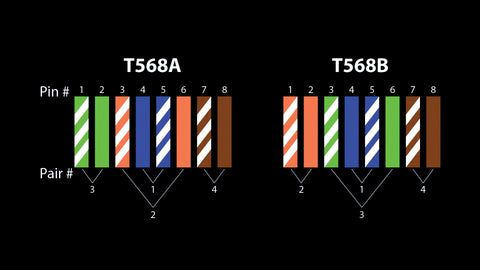Your Cart is Empty
WE SHIP OUR PRODUCT ONLY IN USA

If you work with network cables, you’ve likely encountered the terms T568A and T568B. These are two wiring standards used for eight-position RJ45 modular plugs. In this quick reference guide, we’ll delve into the details of T568A and T568B color coding, their differences, application scenarios, and how to choose between them.
T568A vs. T568B: What’s the Difference?
The primary distinction between T568A and T568B lies in the arrangement of the green and orange wire pairs. Let’s break it down:

| T568A: · Green wire connects to pin three. · Orange wire connects to pin six. · All other wires follow the same pin assignments as T568B. | T568B: · Orange wire connects to pin three. · Green wire connects to pin six. · Again, all other wires align with T568A. |
Why Do We Have Two Standards?
Both T568A and T568B are allowed under the ANSI/TIA-568.2-D wiring standards. Here’s why they exist:
Technical Comparison
From a technical standpoint, there’s no difference between T568A and T568B. Both standards offer the same transmission performance and support Ethernet protocols, including Gigabit Ethernet. However, consistency is crucial when wiring your network. Mixing T568A and T568B can lead to confusion during troubleshooting.
Application Scenarios
Remember, whether you choose T568A or T568B, it won’t impact your network’s speed or reliability. Just ensure consistency throughout your installation. Happy wiring!